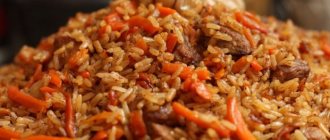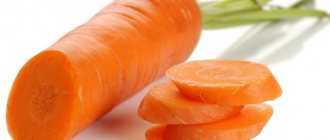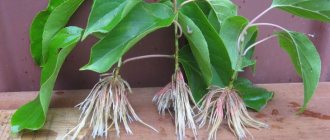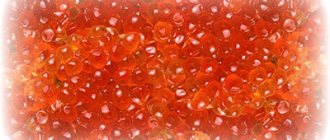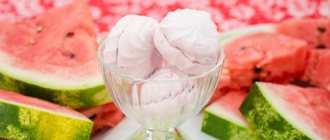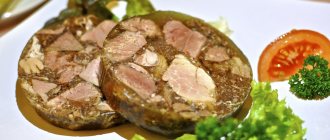Green beans are a very valuable natural product. In terms of protein content, it can compete with meat and fish. Unfortunately, most nursing mothers are wary of this natural source of vitamins and minerals. But pediatricians and nutritionists advise women to include green beans in their diet during breastfeeding.
This nutritional supplement will benefit both the mother and the growing baby. True, there are some nuances associated with the special properties of all legumes. This article will help you eliminate acute issues and balance your daily menu, in which we will tell you how to properly introduce beans in pods into the diet of a nursing mother, and what nutritious dishes can be prepared from this legume.
Can I eat green beans while breastfeeding?
Strict requirements for the diet of a nursing woman are determined, first of all, by the need to reduce any risks to the health of the newborn baby. After all, any unfamiliar product can provoke the most unexpected consequences. Changes in a mother's diet in the first few months of a baby's life are especially dangerous. Therefore, all changes in nutrition should be carried out with extreme caution and under the supervision of a physician.
Of course, if you follow the simplest path, that is, eat only dairy products, you can eliminate all risks. But the baby’s developing body needs a constant supply of minerals and vitamins, and milk cannot provide such an amount of substances. Therefore, the maternal diet must be periodically supplemented with healthy foods. Green beans can enrich milk with a valuable complex of substances that will be equally beneficial for mother and child. Even pediatricians are positive about including beans in meals. The only thing that is strictly prohibited for breastfeeding women is the consumption of raw beans. The fact is that the hard fibers of unprocessed pods can cause severe digestive disorders in mother and baby.
In the first month
In the first months of a baby’s life, his digestive system is not yet ready to process complex foods. Therefore, mother should not introduce green beans and other legumes into her diet. Even after heat treatment, beans can cause painful colic in the baby’s tummy, increased formation of gases, uncontrollable diarrhea and vomiting.
In the second month
Nutritionists and pediatricians believe that the most convenient time for green beans to appear on the menu of a nursing woman is at the end of the fourth month of the baby’s life. In a two-month-old baby, secretory functions are still poorly developed and the “native” intestinal microflora is not fully formed. For this reason, the baby’s digestive tract is simply not ready to accept and process food such as beans.
Video:
10 tips on nutrition for a nursing mother Expand
Can a mother eat green beans while breastfeeding?
During lactation, every young mother is responsible for planning her own diet.
It consists of hypoallergenic, natural products, rich in nutrients, and quite high in calories. Green beans are acceptable foods when breastfeeding. Let's consider in what quantity this product can be consumed, how to introduce it into the diet and the main contraindications.
The benefits of green beans during lactation
Beans are a well-known source of easily digestible vegetable protein. It is an excellent analogue of fish and meat. Therefore, it is definitely included in the diet of nursing mothers, especially those who do not consume protein foods at all or eat them in insufficient quantities.
The composition includes the following useful components:
- vitamin A, B and C;
- cellulose;
- amino acids;
- calcium, sodium, zinc, phosphorus, magnesium and other trace elements.
Regular consumption of green beans strengthens bones and teeth . The vegetable contains a lot of iron, so its consumption increases hemoglobin levels and strengthens the immune system.
The vegetable is also recommended for nursing mothers suffering from diseases of the gastrointestinal tract, urinary system and liver.
Contraindications
Green beans are a healthy and high-calorie product. However, before consuming it, you should find out whether beans can be consumed with certain contraindications. These include colitis, gastric and duodenal ulcers, gastritis, nephritis and gout. If there are no contraindications, eating beans is allowed and even recommended by most pediatricians.
Rules for introducing into the diet
The introduction of green beans into the diet does not differ from the rules for introducing other products. The vegetable is included gradually. If after the first time the child did not have an allergic reaction, the portion is increased. However, if your baby has colic, diarrhea or allergies, you should temporarily stop eating beans.
Rules for introducing into the diet during breastfeeding:
- The first dose should not exceed five pieces.
- It's best to try green beans first. If there is no reaction, include other varieties in the diet.
- Beans are better absorbed in the first half of the day, but it is not recommended to eat them on an empty stomach.
- The introduction of this product into the mother’s diet is recommended when the baby is at least 10-12 weeks old.
- After use, you should carefully monitor the baby's condition.
- If there is no negative reaction, the portion is increased to 20 pieces.
- If the baby has negative reactions to the product, its use should be temporarily stopped and repeated after some time.
The best dishes with green beans during the pregnancy period
Green beans for breastfeeding are the optimal product for maintaining immunity and improving the quality of milk. Various hot dishes, soups and salads are prepared on its basis.
Another cooking option is to use it for a healthy salad. To do this, boil some beans and carrots, pre-cut into slices, add parsley, dill, apple cider vinegar and olive oil. Then salt and add a little black pepper. Mix and serve. This salad contains all the necessary ingredients for the health of mother and baby.
Green beans are also used to make a delicious stew. Add some potatoes, carrots, onions and zucchini to it. This component will give the dish an incredible aroma and pleasant taste. During lactation, a mother should eat not only correctly, but also fully. This dish contains all the useful substances and is quite high in calories.
A flavorful cream soup would also be an excellent option. To prepare it you will need some green beans, lean meat, potatoes, carrots and spices. Prepare a broth based on chicken or beef, add potatoes, carrots and green beans. Grind using a blender. Add black pepper and salt.
During breastfeeding, women try to return to their previous physical shape, so they choose low-fat dishes. The vegetable is steamed and served as a side dish for boiled chicken or beef.
Beans are a healthy vegetable, so there is no need to deny yourself their consumption during lactation. Regular inclusion of this product in a nursing mother’s meals will improve the quality of milk and strengthen the immunity of mother and child. However, only the correct introduction of vegetables into the menu will allow a woman to feel freedom from food restrictions and enjoy a wonderful period of life.
Source: https://RazvitieMalysha.ru/grudnichok/grudnoe-vskarmlivanie/struchkovaya-fasol-pri-gv.html
How to properly eat green beans
All legumes have one negative ability - they increase gas formation. For this reason, many people include beans on the “black list,” forgetting that proper use of this valuable product will completely eliminate all side effects. Dishes with beans are tasty and filling. The pods and the beans themselves contain a huge supply of components necessary for a nursing woman, such as folic acid. In addition, green beans in pods stimulate lactation, which is very important during breastfeeding. The main thing is to follow the consumption norm and prepare the “correct” dishes.
How much can you eat per day
Young bean pods contain a huge supply of mineral elements and almost all vitamins. This means that dozens of individual substances are concentrated in one small grain, and they also contain complex organic compounds. Moreover, each component, entering the body, performs strictly assigned tasks. Considering that each pod can contain 6-15 fruits, it is not difficult to imagine what potential is hidden behind the green flaps of the pods. But it is known that an excess is just as harmful as a deficiency. Therefore, excessive consumption of beans during breastfeeding can lead to unpleasant consequences.
The maximum permissible daily intake of green beans is 20 pods, but at first the portion should not exceed 4–5 pieces. It was mentioned above that a woman can introduce legumes into her diet no earlier than four months after giving birth. If the child responds well to the new product, then you can gradually increase the portion and add new dishes to the menu. Of course, green bean dishes should appear on a nursing mother’s table no more than three times a week.
Is it possible to eat at night and on an empty stomach?
Boiled beans are best consumed in the first half of the day, and ideally for breakfast. You should not eat legume dishes on an empty stomach, as this can provoke the development of gastrointestinal disorders. Because of its special properties, beans should not be eaten even in minimal quantities before going to bed.
Beans during lactation: can a nursing woman eat them?
During the difficult period of breastfeeding for every woman, she should receive a varied and nutritious diet. A nursing woman's diet should include foods high in vitamins and nutrients, since it is from mother's milk that the baby receives all the microelements necessary for its normal development.
Often the list of vegetables that are allowed to be eaten during lactation does not include legumes. This is due to the fact that eating legumes can cause colic and bloating in a newborn.
But beans are a very nutritious product that has a beneficial effect on lactation, increasing the production of breast milk.
With the correct introduction of beans into the menu of a nursing woman, you can significantly diversify her diet and ensure that breast milk receives a sufficient amount of beneficial microelements and vitamins.
Effect on lactation
A competent approach to the consumption of beans by a woman with breastfeeding will ensure that the body is saturated with the nutrients necessary for her and her baby. The salts and beneficial microelements it contains have a beneficial effect on the condition of the entire body as a whole. Beans are the best analogue of meat that is of plant origin.
Eating beans helps strengthen the digestive system, reduce stomach acidity and prevent anemia.
One serving of a dish with beans contains an amount of iron equal to the daily requirement of the human body. This ensures the saturation of cells with oxygen and strengthens the immune system.
The high concentration of magnesium prevents cramps and strengthens muscle mass.
Beans also contain folic acid, which is very important for any woman, especially during breastfeeding. In addition, green beans in the diet of a nursing mother have a positive effect on lactation, promoting better production of breast milk.
Green beans
Green beans are an ideal product for a woman during lactation. Despite the fact that protein is present in smaller quantities than usual, folic acid, minerals and vitamins are contained in much higher concentrations.
Green beans prevent the occurrence of anemia, which often accompanies a woman during the postpartum period. In addition, these beans perfectly remove toxins from the body and prevent hormonal imbalance in women.
Green beans contain large amounts of fiber, so they are recommended to be consumed during breastfeeding. It helps to quickly saturate the body, but does not spoil the figure, since it is a low-calorie product.
Introduction of green beans into the diet
To minimize the risk of a negative reaction to green beans in a newborn, they should be administered taking into account certain rules.
Since the formation of the baby’s digestive system occurs by the 4th month of life, it is from this time that it is recommended to introduce new foods into the diet of a nursing mother.
First, you need to try green beans, and then you can experiment with other varieties.
Initially, the portion should not be more than 5 pods. If the baby’s reaction is normal, then gradually the portion can be increased.
If, after consuming a new product, a baby develops colic, bloating, and other negative consequences, then beans should be excluded from the nursing mother’s diet for 2–3 weeks. Only after this period has expired can you try to introduce beans into the menu again.
How to choose in the store?
When purchasing green beans, you need to pay attention to their appearance. It should have a uniform light green color and be elastic to the touch. Juice must be released from the cut.
Avoid wilted or damp pods as this indicates improper storage. And if storage conditions are violated, the beans quickly deteriorate, becoming covered with brown spots. At the same time, its beneficial properties are certainly lost.
Canned beans
Readers of Ogrudnichke.ru recommend: - Review of the most popular vitamin supplements for children from Garden of Life Read the article >>> - How can Earth Mama products help young parents care for their infants? Read the article - Dong Quai is an amazing plant that helps maintain youth in the female body Read more…
– Vitamin complexes, probiotics, omega-3 from Garden of Life, designed specifically for pregnant women Find out more >>>
Very often, when preparing bean dishes, fresh beans are replaced with canned ones, as this saves a lot of time. However, this is not the right decision in all cases.
Please note that canned beans have contraindications:
- its use should be avoided if there is a peptic ulcer, inflammation of the digestive system, gout, problems with the gallbladder and liver;
- Canned beans are included in baby food gradually so as not to unnecessarily overload the intestines.
Doctors do not recommend eating canned beans to women during breastfeeding. This is primarily due to the fact that the conditions in which beans were grown and preserved do not in all cases comply with existing standards. Therefore, the use of this product is associated with a certain risk to the health of the nursing mother and her baby.
A woman during lactation should introduce canned beans into her diet gradually, starting with small portions. Then you should observe the baby's reaction to the new food. If there is no negative reaction, then use of this product can be continued without fear.
Choosing the right canned beans
When choosing canned beans in a store, it is recommended to adhere to the following rules:
- It is better to choose beans in glass jars. Although their cost is higher, it is possible to appreciate their appearance;
- Pay attention to when the product was manufactured and its expiration date. Tomato paste in canned beans shortens the period before which they should be consumed;
- there should be no sediment at the bottom of the jar, as this indicates poor quality of the product;
- You should not buy canned beans in a metal container if its bottom or lid is swollen. This indicates that the contents of the jar are already spoiled;
- Once opened, canned beans can be stored in the refrigerator for no more than 3 days.
Cooking beans
Women during lactation are recommended to consume dishes with beans a couple of times a week. You can prepare first and second courses, and salads. Here are some simple recipes for dishes with beans that will be useful for nursing mothers and their babies.
Vegetable stew
To prepare vegetable stew for a nursing mother you will need:
- carrots – 1 pc.,
- beets – 1 pc.,
- cauliflower – ½ head,
- tomatoes – 2 or 3 pcs.,
- onions - 1 or 2 heads,
- green beans – 200 – 250 grams.
Vegetables need to be thoroughly washed and carrots and beets peeled. All ingredients, except tomatoes, need to be cut into cubes approximately 2 centimeters in size, mixed, placed on a baking sheet and added vegetable oil.
Place the baking sheet in the oven and bake at 130 – 135 C˚ for 20 – 25 minutes.
After this time, the almost finished mixture of vegetables should be transferred to a deep container, add fresh tomatoes cut into cubes and simmer over low heat until tender.
You can salt the finished dish to your taste and add a little chopped herbs. Spicy seasonings should not be used as they may affect the taste of breast milk.
Vegetable stew can be served both as an independent dish and as a side dish for meat.
Vegetables baked in a pot
To prepare this healthy and very tasty dish for women during breastfeeding, you can use any beans.
- If beans are used, they are soaked in cold water for several hours or overnight.
- The beans need to be cooked for one hour.
- The onion head is cut into large half rings and fried with the addition of vegetable or butter.
- Place boiled beans in a pot and a layer of fried onions on top. If you wish, you can supplement the dish with boiled lean meat or poultry.
- Cover the pots with a lid and place in an unheated oven. Next, the vegetables are baked for 35 minutes at a temperature of 150 – 165 C˚.
Bean soup - puree
For lunch, a nursing mother can prepare a very tasty bean soup - puree. To prepare it, it is better to use white beans so as not to cause discomfort in the baby.
- A glass of beans is poured with cold water and left overnight.
- To the pre-cooked broth (from meat or poultry) you need to add a couple of potatoes, one onion, beans and carrots. All this must be cooked until fully cooked.
- Then you should take out all the ingredients and grind them with a blender to a creamy consistency. The resulting mixture is added back to the broth and cooked for approximately another 15 minutes over low heat.
- You can sprinkle the soup with herbs and serve it with croutons.
Bottom line
Beans are an amazing and very healthy food that you don't need to avoid while breastfeeding. If consumed periodically, it will ensure that the body receives useful substances, strengthens the woman’s immune system weakened after childbirth, and improves the quality of breast milk.
Source: https://ogrudnichke.ru/grudnoe-vskarmlivanie/mozhno-li-struchkovuyu-i-konservirovannuyu-fasol.html
Which product to choose
Of course, the main question is how to choose the right beans in pods for the diet of a nursing woman. The legume family is one of the largest groups. There are more than 90 types of beans alone. All varieties have distinctive features both in the shape and color of the pods, and in the number of grains in them. Green pods are optimal for feeding women during active lactation because they are lower in calories and rich in fiber. Thanks to this combination of characteristics, unripe bean pods are considered a suitable food product for mothers. Therefore, experts recommend starting your acquaintance with legumes with green beans. Now let's focus on which product to choose.
Of course, it is best to prepare dishes from fresh pods. But such an opportunity appears only closer to autumn during the harvest season.
Today, frozen pods are often sold in stores. This product can also be eaten if the pods are of good quality and without damage.
Canned beans are significantly inferior in composition to fresh beans, since during processing the product loses approximately 30% of its beneficial composition. In addition, industrial preservation uses various additives that are unsafe for the health of mother and baby.
When choosing canned beans, you should pay attention to the following criteria:
- best before date;
- absence of cloudy sediment (if vegetable products are in a glass jar);
- pods are approximately the same size;
- the absence of bloating of the lid is the main indicator of quality;
- composition: in addition to beans, the presence of salt, water and sugar is allowed.
Important point:
a canned product with the addition of vinegar and tomato paste is not suitable for feeding a nursing woman.
How to eat beans while breastfeeding
The child’s digestion gradually stabilizes from month to month, the digestive tract is enriched with beneficial bacteria as the child grows, so the mother is obliged to introduce foods into her diet little by little, carefully checking the child’s reaction. Improper use of this or that product threatens to provoke the appearance of allergies and restless behavior of the baby.
No time to read? Download a free book with bean recipes
Beneficial features
Introducing variety in food is necessary in order to replenish the reserves of essential microelements in the body of both yourself and the child, to increase immunity and accumulate strength. The protein in beans is equal to the protein content in meat. In addition, the plant contains the necessary trace elements B and K, the lack of which can cause seizures.
Beans are rich in fiber and carotene, which improve digestion, and the amino acids arginine, lysine and others. It contains a lot of vitamin C, calcium, magnesium and sodium, iron, sulfur and zinc. In addition, it lowers blood sugar levels, increases hemoglobin and improves the cardiovascular system.
When consumed, there is an increase in breast milk in a nursing mother.
Beans contain many useful micro- and macroelements
Harm from beans during breastfeeding
Most mothers doubt whether it is possible to eat beans during breastfeeding without harming the child’s digestion. Of course, the product cannot be introduced from the very first month of feeding. For mother and infant, a vegetable can not only bring benefits, but also cause harm to the baby’s body:
- Few people know that it contains phytic acid. In small quantities, the acid is harmless, but with frequent use, the microelement reduces the absorption of nutrients in the body.
- Since legumes contain a large amount of fiber, this makes them dangerous for those who have colitis or other intestinal diseases.
- Plant fiber in beans, especially green beans, leads to bloating and flatulence in the child and mother. If the woman in labor had a cesarean section, then be patient with entering it into your menu.
You should not overuse beans like any other product.
Which beans are best to eat during breastfeeding?
It is advisable to start with the legume. During breastfeeding, green beans will act more gently on the intestines, causing less gas formation. Capsicum has less calories and is close in structure to greens. It contains folic acid, which is very necessary for pregnant and lactating women.
Red beans are used for breastfeeding by adding them to soups and salads. You can eat no more than 10-15 pieces per day, and nutritionists recommend consuming no more than 1-2 times per week. First you need to soak it in clean cold water until softened, then boil for 40-45 minutes. And only then add it to dishes. It is good to include in soups, salads, and vegetable stews.
Start with green beans, gradually introducing new varieties into your diet
When and how can it be introduced into the diet of a nursing mother?
Many people wonder: is it possible to eat beans while breastfeeding? It is possible, but only if the baby is already 4.5 months old. They begin to consume it by first introducing it into multi-component breakfast or lunch dishes. You can’t eat beans alone as a separate dish yet, as there is a risk that your baby will develop colic.
As with introducing new foods into your diet, remember to take a break to see how your body reacts. Wait a day or two and watch the child.
If you notice the appearance of rashes, redness, discomfort in the intestines, or anxiety in your baby, then it is better to consult with your supervising doctor and temporarily not include this product in your diet.
Recipes with beans
If you have already started introducing potatoes, carrots, cabbage, tomatoes, then you have probably already made vegetable stew .
Required ingredients:
- Carrots - 1 piece;
- Onion -1-2 heads;
- Cabbage - ¼ head;
- Tomato - 2-3 pieces;
- Green beans - 150-180g;
- Potatoes - 2-3 potatoes;
- Eggplant - 1 piece.
Cooking method:
Wash the vegetables. Peel potatoes, carrots, onions. Cut the ingredients into small cubes. In a frying pan in vegetable oil, lightly fry the onions and carrots until golden brown, add the tomatoes. Then sequentially add eggplant, beans, cabbage, potatoes. Salt the dish to taste.
It remains to pour 1-1.5 glasses of water, close the lid and simmer over low heat until cooked. We determine readiness by the potatoes, which take longer to cook than other vegetables. Spicy seasonings should not be added to enhance the taste, so as not to spoil the taste of breast milk. Adding greens is not prohibited.
White or red beans, which have a large amount of proteins necessary for building muscle tissue, are often used in pureed soups.
Vegetable stew is a tasty and healthy dinner option for a nursing mother
Bean soup.
Required ingredients:
- White or red beans -1 cup;
- Onion - 1 piece;
- Carrots - 1 piece;
- Potatoes - 1 piece;
- Ready-made broth (beef or chicken) – 0.5 liters.
Preparation:
Step 1. Pre-soak the beans in cold water for 7-8 hours, or preferably overnight.
Step 2. Cook the broth. Add some salt.
Step 3. Boil the beans in water until completely softened.
Step 4. Add potatoes, onions, carrots to the broth. Cook until done.
Step 5. Remove the vegetables and place them in a separate, preferably deep, bowl. Add ready-made legumes there. Puree with a blender with a suitable attachment.
Step 6. Place the finished vegetable puree back into the broth and cook for another 10 minutes until smooth.
Step 7. Serve with crackers and herbs.
Puree bean soup can be a hearty lunch option
Using these recipes, as well as following simple recommendations and rules, it will be possible to eliminate negative consequences, the child’s body will correctly assimilate new foods, quickly adapt to the new diet, and beans during breastfeeding will improve the well-being of a nursing woman.
https://www..com/watch?v=VewMb3eN0hQ
You may also like
Source: https://mam-book.ru/kak-upotreblyat-fasol-pri-grudnom-vskarmlivanii
The benefits of green beans during breastfeeding
Green beans are ideal for dietary nutrition. The perfectly balanced composition of the natural product allows you to prepare a wide variety of dishes from it.
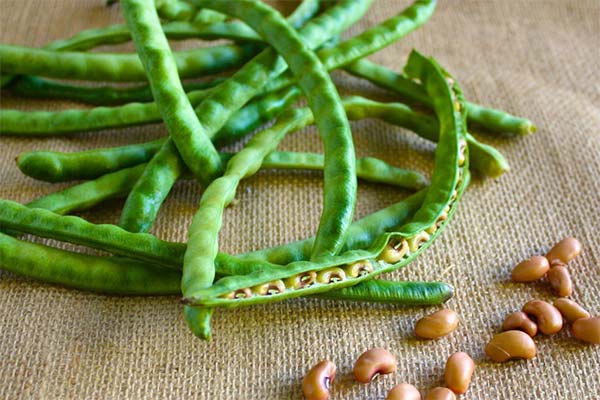
In addition to food purposes, beans are an excellent cosmetic product. For example, nourishing masks can be made from beans, and powder was made from dried cereals in the old days.
Most of all, green beans, like other legumes, are valued for their high protein content. In the first year of his life, the child actively grows and gains weight. Important organs and systems are formed in his body, and brain activity is activated. All these processes require resources that young beans can provide. The grains and pods, in addition to proteins, contain the following beneficial substances:
- Plant fibers in large quantities.
- Vitamin complex, including B vitamins, tocopherol, ascorbic and folic acid, as well as other substances from this group.
- Mineral elements: iron, copper, sulfur, zinc, magnesium and many others.
- Carotenes.
- Amino acids, including essential ones.
- Fats and sugars.
All of the listed components are equally useful for both a nursing woman and a growing baby. The presence of young bean pods in the menu will have the following positive effects:
- will help strengthen the immune system;
- improves digestion;
- normalizes intestinal function;
- will prevent the development of anemia;
- strengthens bone and muscle tissue;
- normalizes the hormonal levels of women after childbirth;
- will benefit the functioning of the cardiovascular system.
We could go on and on about the capabilities of this unique product, but most women can quickly restore normal weight and improve their appearance with its help. After all, beans contain everything that can refresh your facial skin and strengthen your nails and hair.
And the last argument in favor of young beans is that the calorie content of 100 g of fresh product is only 23 units. These data refute the myths that beans promote weight gain. On the contrary, the presence of such a low-calorie product in the diet will help a woman quickly bring her figure back to normal.
Good to know:
If a nursing mother regularly eats bean dishes, the baby will cut teeth in time.
Beans in the diet of a nursing mother: studying the pros and cons
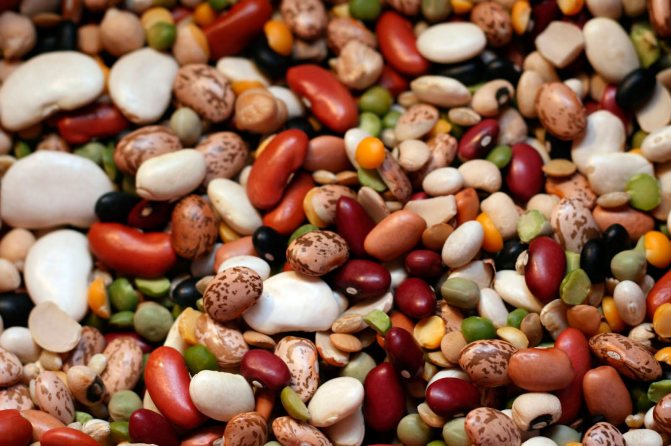
A nursing mother's diet should be varied, healthy and safe for the baby's delicate digestive system. Legumes should be consumed with caution, due to the high likelihood of bloating, flatulence and colic in the baby. At the same time, beans are a source of valuable nutrients - vitamins and minerals in high concentrations, and have a positive effect on the quality of breast milk. Let's figure out how and when to eat this product so that it brings only benefits.
Let's list the main beneficial components of beans.
What are the dangers of green beans during lactation?

From the above description it follows that green beans are a valuable and nutritious food product. But under certain circumstances it should not be used by women during lactation. In the list of contraindications:
- peptic ulcer;
- colitis;
- gout;
- gastritis;
- jades;
- pancreatitis;
- cholecystitis.
If a woman has one of the listed pathologies, supplementing her diet with beans is strictly prohibited. You should also consider the baby's sensitivity to beans. If the first experience of eating beans in pods caused an allergy in a child, you should delay introducing this product into the diet.
special instructions
- Even moderate portions of green beans can cause bloating and colitis in a child. Therefore, at the first signs of a painful condition, you should immediately abandon dishes with such a product.
- Beans in their pods, like asparagus, contain phytic acid. This organic compound in large quantities reduces the absorption of nutrients.
- Particular care should be taken when introducing legumes into the diet of women who gave birth by caesarean section.
How to properly introduce beans into your diet?
A nursing mother can gradually include this vegetable in the menu if, after eating it, she has not experienced allergic reactions or negative changes in the functioning of the digestive tract.
Main rules:
- the first dose should be about 5 pieces;
- green beans are better suited for the first tasting, and then you can try other varieties;
- to introduce new products, it is better to wait until the baby is 4-5 months old - at this age his digestive system is already formed;
- It is recommended to consume boiled beans in the morning, but not on an empty stomach;
- the mother should carefully monitor the baby’s stool and reaction;
- if there are no undesirable symptoms of bloating, you can increase the amount of boiled beans to 20 pieces per day;
- If your child has regular colic, it is better to avoid this product for a while.
Beans are an amazing and healthy plant that should not be neglected during lactation. Periodic consumption of this tasty product will enrich the body with valuable substances, improve the quality of milk and strengthen a woman’s weakened immune system.
Correct introduction of this vegetable into the diet will allow the nursing mother to feel freedom from restrictions and enjoy the best period in her life - natural breastfeeding!
Subscribe to our VKontakte group
How to properly introduce green beans into the diet of a nursing mother
You need to understand that breastfeeding is not the right time for experiments. Each new product should be introduced into the mother's diet gradually, in small portions. It is believed that if a woman regularly consumed beans before pregnancy, the risk of side effects is minimized. But still, if you want to expand your diet, you should adhere to the following rules:
- It's better to start with boiled beans.
- For the first test, 5 pods are enough.
- You can start adding beans to your diet when your baby turns three months old, but not earlier.
- If there is the slightest deviation in the baby’s health, you should postpone introducing the new product for a couple of weeks.
- It is better to eat bean dishes at breakfast after feeding the baby in the morning, but not on an empty stomach.
- If no deviations are noticed on the baby’s part, after two days you can again eat some boiled or stewed beans.
- You need to increase the portion gradually, literally one pod once a week, but the permissible dose per day should not exceed 20 pieces.
If you follow these rules, then getting acquainted not only with beans in pods, but also with other products, will pass without complications.
We recommend reading:
how to properly introduce lentils into the diet of a nursing mother
Read
Rules for introducing into the diet
The introduction of green beans into the diet does not differ from the rules for introducing other products. The vegetable is included gradually. If after the first time the child did not have an allergic reaction, the portion is increased. However, if your baby has colic, diarrhea or allergies, you should temporarily stop eating beans.
Rules for introducing into the diet during breastfeeding:
- The first dose should not exceed five pieces.
- It's best to try green beans first. If there is no reaction, include other varieties in the diet.
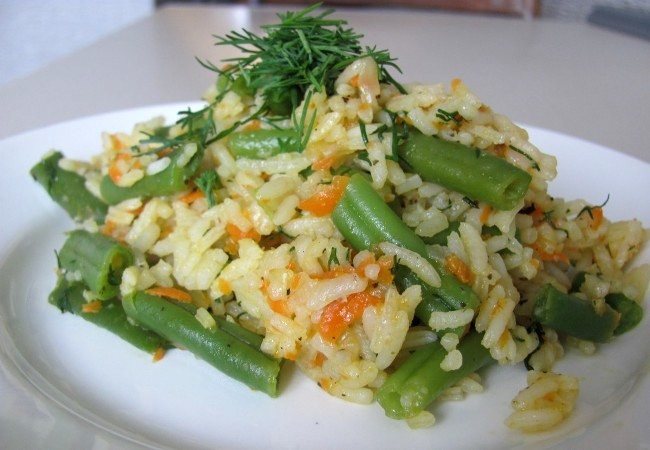
- Beans are better absorbed in the first half of the day, but it is not recommended to eat them on an empty stomach.
- The introduction of this product into the mother’s diet is recommended when the baby is at least 10-12 weeks old.
- After use, you should carefully monitor the baby's condition.
- If there is no negative reaction, the portion is increased to 20 pieces.
- If the baby has negative reactions to the product, its use should be temporarily stopped and repeated after some time.
Green bean recipes
During lactation, not only the quality and beneficial characteristics of products are important, but also the method of preparing dishes. Since nursing mothers are strictly prohibited from consuming raw beans, experts recommend boiling the vegetable or steaming it. Fried beans should also not appear on a woman’s table, because such food is not suitable for the baby’s digestive system. Otherwise, you can prepare nutritious and healthy dishes from young bean pods that will add variety to the strict diet of a nursing woman.
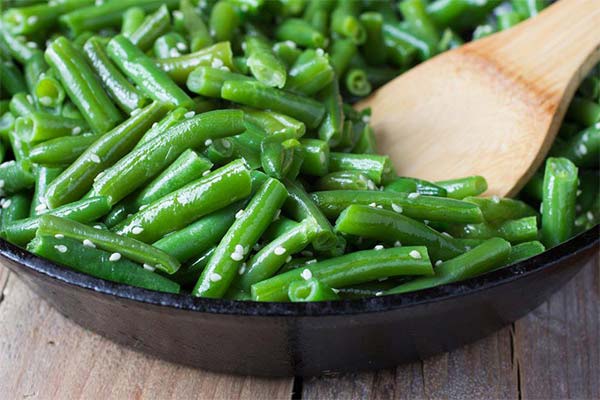
What can you cook from bean pods?
Young beans in pods go well with meat and any vegetables. They are especially good in combination with cabbage. The following dishes can be prepared from beans:
- soups:
- salads;
- side dishes;
- puree;
- vegetable stew.
Homemade canned beans can be used as a filling for pies.
We offer recipes for the best green bean dishes that nursing mothers can include in their daily diet.
Light salad
The recipe for this delicious salad is very popular. Preparing the dish does not require much time, but it turns out to be an excellent and satisfying snack.
Product set:
- carrot – 1 pc.;
- beans in pods - 2 handfuls;
- apple cider vinegar – 2 tbsp;
- olive oil – 2 tbsp;
- parsley - a few sprigs;
- salt and ground pepper - on the tip of a knife.
How to cook:
- Rinse the vegetables well and boil.
- Cut the carrots into slices, and also divide the bean pods into several parts.
- Finely chop the greens.
- Mix all ingredients, add salt, pepper, vinegar and oil.
- Mix the salad well.
Then you can enjoy the taste of a nutritious dish.
Cream soup with beans
This everyday dish is perfect for a nursing woman's diet.
To prepare it you will need:
- green beans – 0.5 kg;
- vegetable or chicken broth – 500 ml;
- carrot – 1 pc.;
- potatoes - several tubers;
- salt, ground pepper - to taste;
- chopped greens - optional.
Cooking process:
- First add bean pods, diced carrots and potatoes into the prepared broth.
- Cook everything for 10 minutes.
- Then use a blender to turn the boiled vegetables into puree.
- Combine the two parts of the dish, add salt and pepper.
You can start tasting the aromatic first course with beans.
Video:
how to cook delicious green beans Expand
Vegetable stew
And this amazing dish will appeal not only to the nursing woman, but also to the rest of the family. Considering the beneficial potential of vegetable stew with the participation of young beans, it can be included in your daily diet. To prepare the stew you will need the following food set:
- cauliflower – 1/2 head;
- tomatoes - 2 medium fruits;
- beets - 1 root vegetable;
- onion – 1 head;
- carrot – 1 pc.;
- green beans – 1/2 kg;
- eggplant – 1 pc.
When all the vegetables are prepared, you can begin the culinary process:
- First, cut the vegetables into any desired shape. Divide the cabbage into inflorescences.
- Place the vegetable mixture, except tomatoes and beans, in a suitable bowl greased with olive oil.
- Then place the prepared pan into the preheated oven.
- At a temperature of 130 degrees, cook the dish for about 20 minutes. The stew should not be brought to full readiness.
- After the specified time has passed, add bean pods and tomatoes to the vegetables.
- After this, transfer the half-cooked stew to another bowl and simmer over low heat until fully cooked.
Side dish recipe
In principle, this version of the dish is a little similar to the previous recipe, but the only difference is that in this case the green beans are prepared without adding other vegetables.
Sequence of culinary actions:
- For 1.5 liters of water, take 1/2 kg of young bean pods.
- Soak the beans in cold water for a couple of hours. If using a frozen product, no soaking is required.
- Then, in a separate bowl, bring the specified volume of water to a boil, add salt, beans and spices.
- Cook for 5-10 minutes until the beans are soft.
- Place the half-cooked beans again in a bowl of cold water for a minute.
- Drain the water.
This side dish goes well with fish and meat, but you can also eat it as an independent dish.
Green beans with breastfeeding
Can a mother eat green beans while breastfeeding?
The best dishes with green beans during the pregnancy period
Green beans for breastfeeding are the optimal product for maintaining immunity and improving the quality of milk. Various hot dishes, soups and salads are prepared on its basis.
Another cooking option is to use it for a healthy salad. To do this, boil some beans and carrots, pre-cut into slices, add parsley, dill, apple cider vinegar and olive oil. Then salt and add a little black pepper. Mix and serve. This salad contains all the necessary ingredients for the health of mother and baby.
Green beans are also used to make a delicious stew. Add some potatoes, carrots, onions and zucchini to it. This component will give the dish an incredible aroma and pleasant taste. During lactation, a mother should eat not only correctly, but also fully. This dish contains all the useful substances and is quite high in calories.
A flavorful cream soup would also be an excellent option. To prepare it you will need some green beans, lean meat, potatoes, carrots and spices. Prepare a broth based on chicken or beef, add potatoes, carrots and green beans. Grind using a blender. Add black pepper and salt.

During breastfeeding, women try to return to their previous physical shape, so they choose low-fat dishes. The vegetable is steamed and served as a side dish for boiled chicken or beef.
Beans are a healthy vegetable, so there is no need to deny yourself their consumption during lactation. Regular inclusion of this product in a nursing mother’s meals will improve the quality of milk and strengthen the immunity of mother and child. However, only the correct introduction of vegetables into the menu will allow a woman to feel freedom from food restrictions and enjoy a wonderful period of life.
Prepare a broth based on chicken or beef, add potatoes, carrots and green beans.
Cooking beans
Women during lactation are recommended to consume dishes with beans a couple of times a week. You can prepare first and second courses, and salads. Here are some simple recipes for dishes with beans that will be useful for nursing mothers and their babies.
Vegetable stew
To prepare vegetable stew for a nursing mother you will need:
- carrots – 1 pc.,
- beets – 1 pc.,
- cauliflower – ½ head,
- tomatoes – 2 or 3 pcs.,
- onions - 1 or 2 heads,
- green beans – 200 – 250 grams.
Vegetables need to be thoroughly washed and carrots and beets peeled. All ingredients, except tomatoes, need to be cut into cubes approximately 2 centimeters in size, mixed, placed on a baking sheet and added vegetable oil. Place the baking sheet in the oven and bake at 130 – 135 C˚ for 20 – 25 minutes. After this time, the almost finished mixture of vegetables should be transferred to a deep container, add fresh tomatoes cut into cubes and simmer over low heat until tender.
You can salt the finished dish to your taste and add a little chopped herbs. Spicy seasonings should not be used as they may affect the taste of breast milk.
Vegetable stew can be served both as an independent dish and as a side dish for meat.
Vegetables baked in a pot
To prepare this healthy and very tasty dish for women during breastfeeding, you can use any beans.
- If beans are used, they are soaked in cold water for several hours or overnight.
- The beans need to be cooked for one hour.
- The onion head is cut into large half rings and fried with the addition of vegetable or butter.
- Place boiled beans in a pot and a layer of fried onions on top. If you wish, you can supplement the dish with boiled lean meat or poultry.
- Cover the pots with a lid and place in an unheated oven. Next, the vegetables are baked for 35 minutes at a temperature of 150 – 165 C˚.
Bean soup - puree
For lunch, a nursing mother can prepare a very tasty bean soup - puree. To prepare it, it is better to use white beans so as not to cause discomfort in the baby.
- A glass of beans is poured with cold water and left overnight.
- To the pre-cooked broth (from meat or poultry) you need to add a couple of potatoes, one onion, beans and carrots. All this must be cooked until fully cooked.
- Then you should take out all the ingredients and grind them with a blender to a creamy consistency. The resulting mixture is added back to the broth and cooked for approximately another 15 minutes over low heat.
- You can sprinkle the soup with herbs and serve it with croutons.
